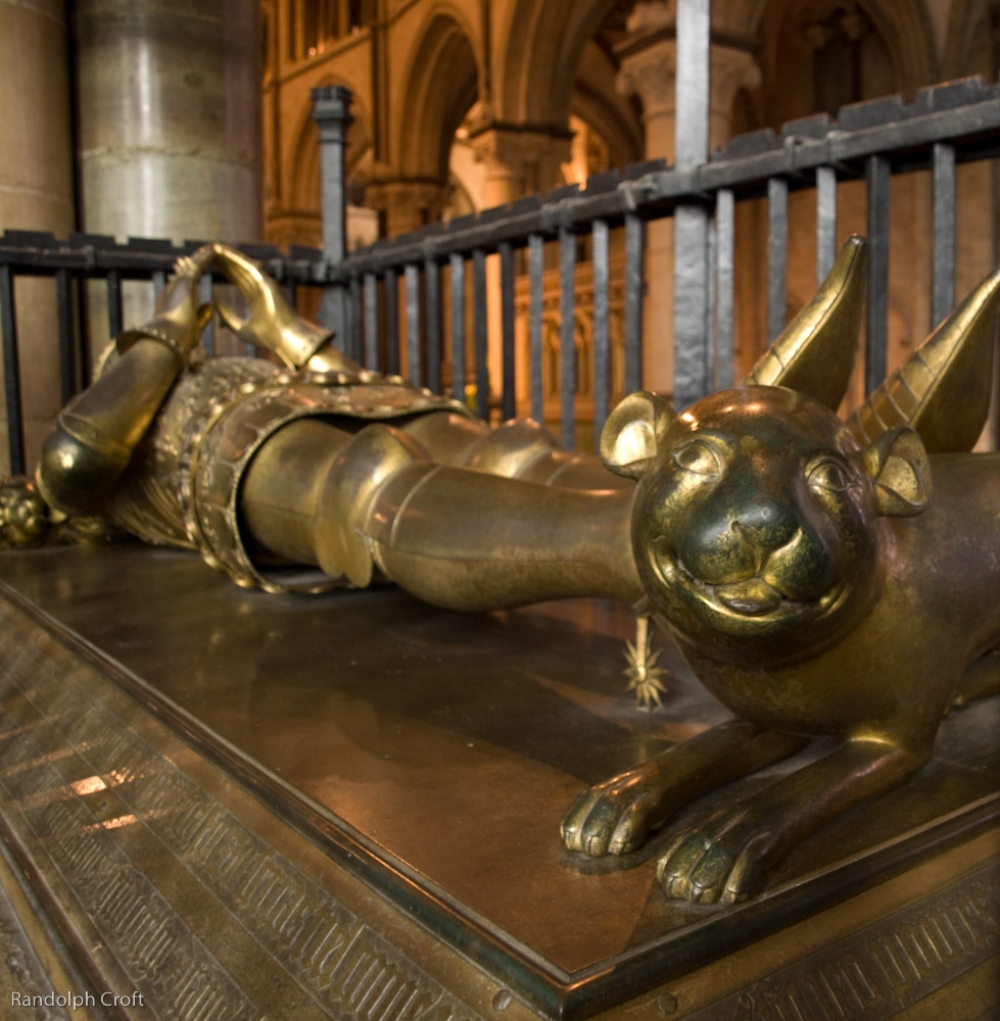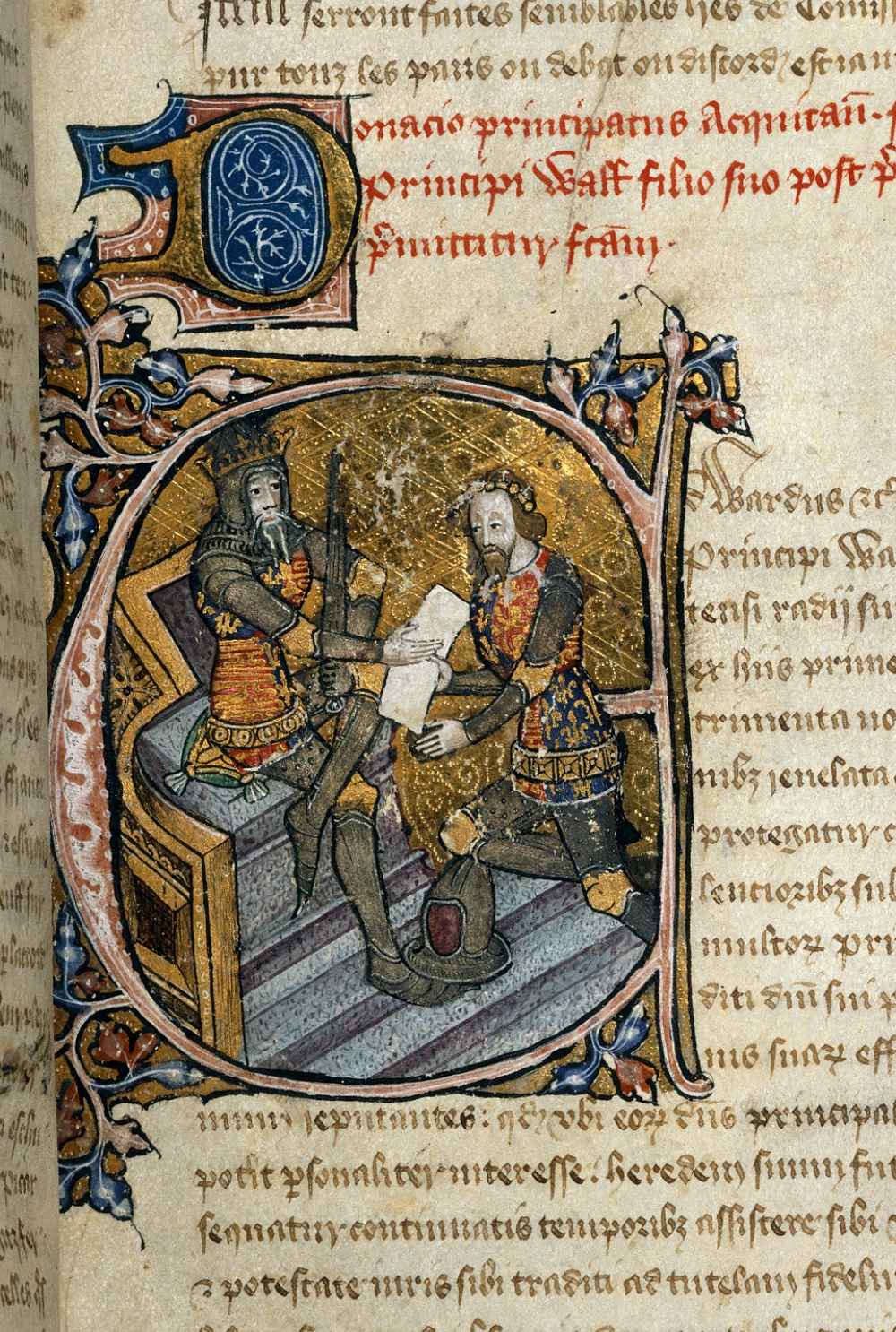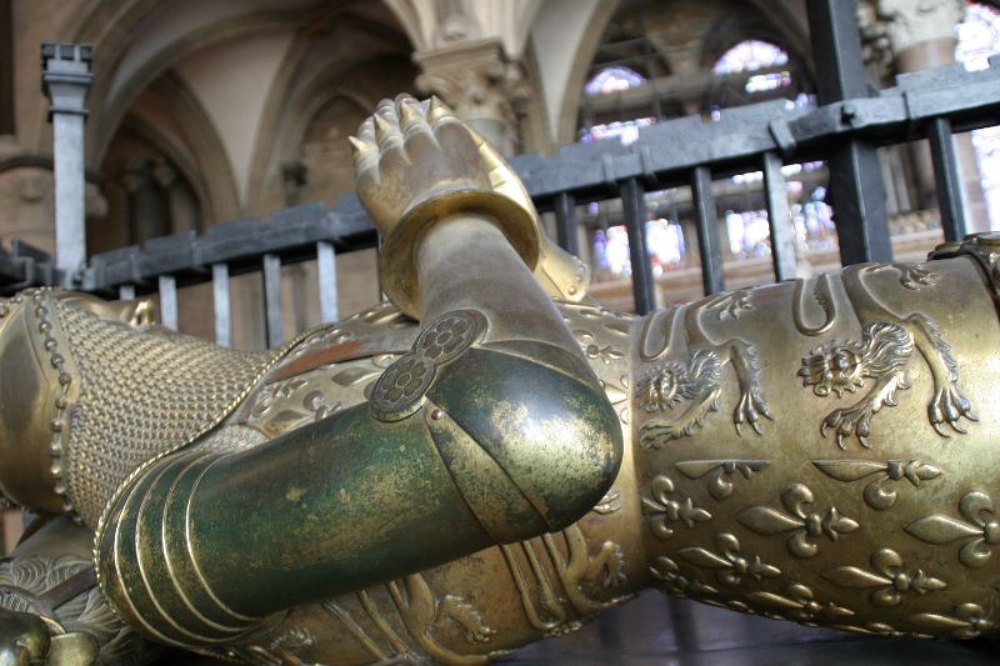The solemn, armored figure lies finally at rest, protected for eternity by an elaborate suit of metal. His belongings hang above him in the Trinity Chapel at Canterbury Cathedral, a source of never ending fascination for those who study English history. The figure is an effigy of Edward of Woodstock, more commonly known as the Black Prince. He was born the eldest son of King Edward II and was the heir apparent until he died from dysentery at the age of 45 without ascending the throne. His final wishes, put into writing the day before he expired, was that his body be put on display in his armor in the cathedral with his rotting corpse inside “for all to see”. A new study looks inside the effigy and shows that not only was there no body inside- it also may not have even been made until a decade after his death.

The interdisciplinary study was a joint effort between Jessica Barker, Graeme McArthur, and Emily Pegues and was published in the November 2021 issue of The Burlington Magazine. For this research they had to come up with a portable and non-invasive way to study the metalwork of the effigy.
A hand-held portable X-ray fluorescence spectrometer was used to understand how the effigy was constructed. This allowed researchers to discern the different layers of the main bronze from the gilt at the surface level. In order to get a comprehensive understanding of the effigy a variety of rather acrobatic poses were needed. Some of these were later posted to Twitter by Pegues.
Conducting research in @No1Cathedral was an absolute delight—and posed some acrobatic challenges to reach the XRF spectrometer past the 15th century railings to the tomb. Fortunately we were provided with solid scaffolding: pic.twitter.com/7QpAS8doAu
— Emily Pegues (@EmilyPegues) October 27, 2021
Then a piece of equipment normally reserved for medical procedures was employed: an endoscopy camera. Using the flexible camera allowed to see inside the hollow parts of the effigy. What they found was that this effigy bears a striking resemblance to the effigy of Edward III, which was made around the mid-1380s, nearly a decade after the Black Prince died.
The effigy was likely commissioned by King Richard II, son of Edward of Woodstock, at the same time that he was having the effigy of Edward III of England made.

The authors of the study speculate that the young king was attempting to cement the monarchy English history by making both effigies, thereby stabilizing the image of his own bloodline following a rocky period of suspicious deaths and hostile takeovers. However, King Richard II was deposed in 1399 and died in custody after a very rocky reign.
Though there is no evidence of who exactly made it, researchers were able to see the order in which the pieces were assembled and wrote in the study that the fabricator likely had the help of an armorer since the details were so realistic, down to the last rivet.

The authors wrote that the effigy of the Black Prince “represents an innovation in English medieval funerary art” as effigies up until that time had usually been carved from stone or wood. Instead this one is cast in metal to be cosmetically an exact replica of the original armor worn by the Black Prince.
The would-be king is thought to have gotten his nickname from a dark suit of armor he wore into battle, but it is also possible that after his ruthless treatment of the French at Aquitaine he was given the title to show how cruel he was. His effigy is one of only six metal effigies from the medieval period to survive today.
SKM: below-content placeholderWhizzco for DOT

